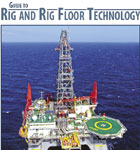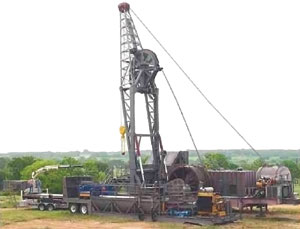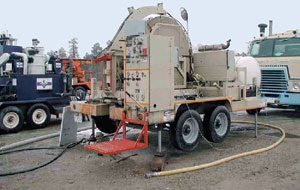Future rig designs: Microhole technology gets more serious
December 2004 Supplement Future Rig Designs Microhole technology gets
Microhole technology gets more seriousThe idea that, when it comes to wellbore diameter, smaller is cheaper has been understood since drilling began. But only recently has the idea of drilling truly tiny holes (< 2-in. dia.) been seriously considered. The reduction in well fluids, cement and steel could result in cost savings as dramatic as 50%, depending on what is being compared. Small drilling footprints and less fluid volumes have beneficial environmental impacts as well. Early attempts to modify mining coring rigs to the task proved technically successful, but did not yield significant cost savings because drilling depths remained relatively shallow and infrastructure costs remained high. More recent efforts at reducing hole size – in the slimhole range of about 4 to 5 in. – while successful, have been met with lukewarm acceptance, but slowly growing acceptance nonetheless, Fig. 1.
In 1994, Los Alamos National Laboratory (LANL) advanced the idea of using coiled tubing to drill deep, small holes with 1-3/8-in to 2-3/8-in. diameters, up to 10,000 ft, for exploration wells and reservoir monitoring (see World Oil, Oct. 1999. pg. 21). More recently, LANL has expanded the idea for production as well, for development drilling up to 5,000 ft, including reservoir monitoring. A significant increase in ROP is not likely with microhole drilling, absent a breakthrough in drilling technology or technique, because just achieving a conventional rate is difficult. This is due to the narrowing of the annulus around the drillstem. Problems with pressure (including equivalent circulating density), low annular flow rates, drill-cutting particle-size and increases in required hydraulic power all act to defeat attempts to increase ROP. The researchers believe that the savings must be primarily derived from two areas: 1) reduced mass of the required system components and materials by an order of magnitude, as well as fabrication and mobilization costs by a lesser factor; and 2) reduced labor costs due to automation and decreases in size/ weight, with the handling of small, non-automated components by not more than two people. Experience to date. So far, LANL scientists have drilled over 2,000 ft of microhole using a commercially available coiled tubing drilling system (Fig. 2). Wells 1-3/4- and 2-3/8-inch in diameter have been drilled to 700 ft.
As part of the effort, microhole logging tools and seismic sensors are being developed. This is one area that everyone agrees should not be, and has not been, a problem, given the advances in electronic miniaturization. This summer, six new areas were awarded partial funding by US Department of Energy within the microhole project:
For microdrilling to be accepted by industry, especially by independent, small service companies, a host of new equipment – from cementing and perforating to logging tools and artificial lift pumps – will have to be developed at microhole sizes. LANL has the industry off to a good start. |
||||||||||||
- Coiled tubing drilling’s role in the energy transition (March 2024)
- Using data to create new completion efficiencies (February 2024)
- Digital tool kit enhances real-time decision-making to improve drilling efficiency and performance (February 2024)
- E&P outside the U.S. maintains a disciplined pace (February 2024)
- Prices and governmental policies combine to stymie Canadian upstream growth (February 2024)
- U.S. operators reduce activity as crude prices plunge (February 2024)
- Applying ultra-deep LWD resistivity technology successfully in a SAGD operation (May 2019)
- Adoption of wireless intelligent completions advances (May 2019)
- Majors double down as takeaway crunch eases (April 2019)
- What’s new in well logging and formation evaluation (April 2019)
- Qualification of a 20,000-psi subsea BOP: A collaborative approach (February 2019)
- ConocoPhillips’ Greg Leveille sees rapid trajectory of technical advancement continuing (February 2019)





